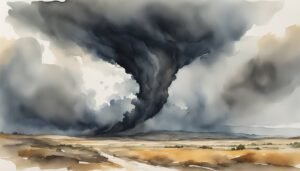Geography and Hydrology
Source to Sea
The Amazon River, located in South America, is the second-longest river in the world after the Nile, with a length of over 6,400 km.
It originates from the Andes Mountains in Peru and flows through Brazil before emptying into the Atlantic Ocean.
The Amazon has an incredible width, reaching up to 11 km during the wet season.
During its journey from the Andes to the Atlantic Ocean, the Amazon River passes through various ecosystems, including the vast Amazon rainforest, which is the largest rainforest on Earth.
The city of Iquitos in Peru and Manaus in Brazil are major settlements along the river.
Tributaries and Drainage
The Amazon River has numerous tributaries, with the Marañón and Ucayali rivers being the primary sources.
The Amazon drainage basin covers approximately 40% of the South American continent, spanning countries like Brazil, Peru, Ecuador, Bolivia, and Venezuela.
The basin is home to a diverse range of flora and fauna, making it one of the richest ecosystems in the world.
Some of the major tributaries contributing to the Amazon River include the Madeira River and the Apurímac River, which form part of its vast drainage system.
The hydrology of the Amazon follows seasonal patterns, with the wet season causing a significant increase in water volume and the dry season leading to a decrease in river flow.
The Amazon River has an astonishing discharge rate, with an average discharge of about 215,000-230,000 m³/s, making it the largest drainage system in the world in terms of volume.
This large quantity of freshwater contributes significantly to the Atlantic Ocean’s salinity.
In conclusion, the Amazon River is an extraordinary natural wonder that plays a crucial role in the ecology and climate of South America.
Its extensive length, impressive discharge rate, and diverse set of tributaries offer unparalleled opportunities for exploration and scientific study.
Biodiversity and Ecology

The Amazon River, flowing through South America, is renowned for its incredible biodiversity and rich ecology.
This massive river, along with its tributaries, sprawls across multiple countries, including Brazil, Peru, Colombia, and Ecuador, supporting a wide range of ecosystems and habitats.
Wildlife and Habitats
Naturally, the Amazon River is home to an astonishing array of plants, fishes, and animals.
One of the most fascinating creatures to inhabit the river is the Amazon River dolphin, or boto, known for its pinkish hue and playful behavior.
Moreover, the river is teeming with numerous fish species, including colorful and aggressive piranhas, that contribute to the overall biodiversity.
On land, the Amazon Rainforest houses many unique species, such as the formidable anaconda, one of the largest snakes in the world.
These ecosystems are also vital for the survival of Indigenous peoples who call the Amazon Rainforest home.
Conservation Efforts
Unfortunately, the incredible biodiversity and ecology of the Amazon River Basin face multiple challenges, including deforestation and habitat destruction.
This has led to widespread concern and numerous conservation initiatives.
One such initiative is a large-scale hydrologic and hydrodynamic modeling project focusing on better understanding the Amazon River Basin to promote sustainable water resource management.
Many non-governmental organizations also focus on protecting the surrounding ecosystem and advocating for the rights of indigenous peoples who depend on the region’s natural resources.
In conclusion, the Amazon River’s rich biodiversity and unique ecosystems are a treasure that merits protection and conservation.
Multiple efforts are in place to preserve and better understand this wondrous region for the benefit of future generations and the diverse species that call it home.




